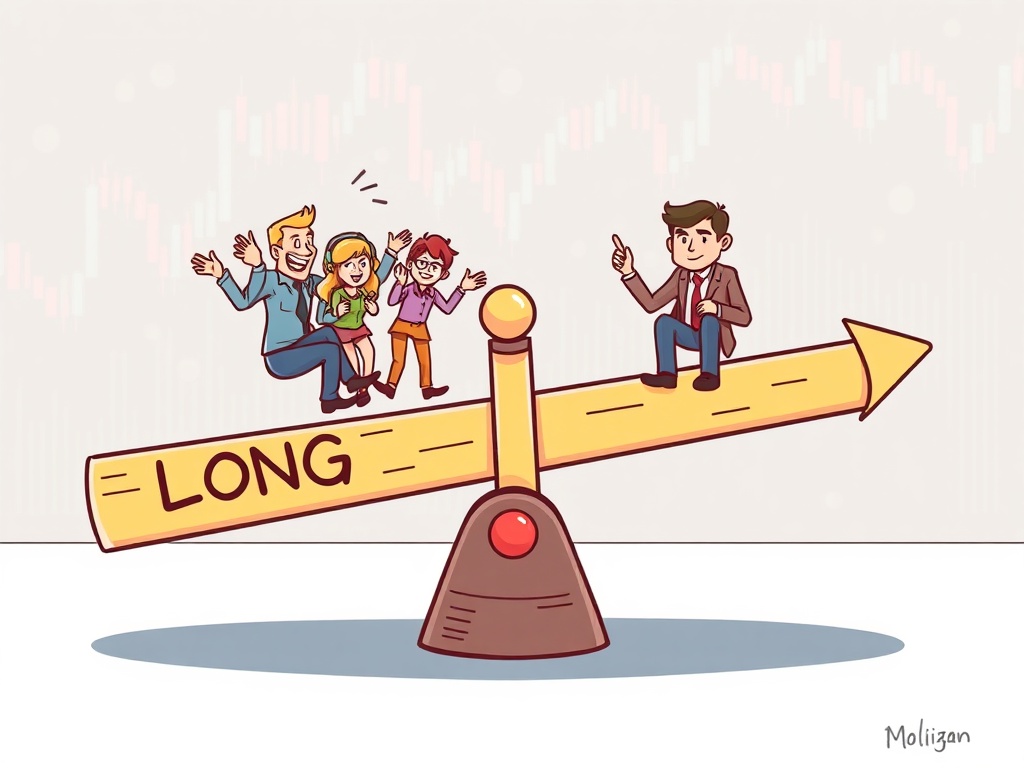BitcoinWorld

Bitcoin Price Drop: Unpacking the Sudden $117,000 Plunge
The cryptocurrency market, known for its dynamic shifts and unpredictable movements, has once again captured headlines as Bitcoin (BTC) experienced a significant downturn, falling below the critical $117,000 mark. According to real-time market monitoring, BTC is currently trading at $116,990.44 on the Binance USDT market. This sudden Bitcoin price drop has sent ripples across the investor community, prompting questions about its causes and potential implications for the broader digital asset landscape. For both seasoned traders and new entrants, understanding such market movements is crucial for navigating the inherent volatility of cryptocurrencies.
Understanding the Bitcoin Price Drop: A Closer Look at the Numbers
The recent dip below $117,000 is a moment that demands attention. While daily fluctuations are a norm in the crypto world, breaching a significant psychological and technical support level like $117,000 often signals a shift in market sentiment or underlying factors at play. Just hours before, Bitcoin was holding relatively steady, showing signs of consolidation. However, a sudden sell-off pressure pushed its value down rapidly. This rapid descent highlights the highly liquid and often reactive nature of the cryptocurrency market, where large orders can trigger cascading effects.
To put this into perspective, let’s consider the immediate impact:
- Liquidation Events: A sharp Bitcoin price drop often leads to the liquidation of leveraged positions, especially those with tight stop-losses, further exacerbating the downward trend as more sell orders hit the market.
- Investor Sentiment Shift: The breach of a key support level can trigger fear among short-term holders, leading to panic selling and a loss of confidence, even if temporary.
- Technical Analysis Indicators: Traders who rely on technical analysis will now be looking at the next potential support levels, which could be significantly lower, influencing their trading strategies.
This particular movement, while not unprecedented in Bitcoin’s history, serves as a reminder of the need for vigilance and a well-informed approach to crypto investing. The market’s response to this Bitcoin price drop will largely depend on whether new buyers step in at these lower levels or if the selling pressure persists.
Why the Bitcoin Price Drop? Unpacking Potential Factors at Play
Attributing a precise single cause to a market movement like a Bitcoin price drop is often challenging, as it’s typically a confluence of several factors. However, we can identify several potential contributors that might have played a role in this recent downturn:
1. Macroeconomic Headwinds
The broader global economic climate significantly influences risk-on assets like cryptocurrencies. Concerns about rising inflation, interest rate hikes by central banks (like the U.S. Federal Reserve), and potential economic slowdowns can lead investors to de-risk their portfolios, moving capital out of volatile assets and into safer havens. This ‘flight to safety’ often impacts Bitcoin, which, despite its ‘digital gold’ narrative, still behaves as a growth asset in many respects.
2. Regulatory Uncertainty
Ongoing discussions and potential new regulations in major economies can cast a shadow over the crypto market. News of stricter oversight, potential bans, or unfavorable tax policies can create fear, uncertainty, and doubt (FUD) among investors, leading to sell-offs. While no specific major regulatory news immediately preceded this dip, the general climate of regulatory scrutiny is a constant background factor.
3. Whale Movements and Large Liquidations
The cryptocurrency market, especially Bitcoin, is still heavily influenced by ‘whales’ – individuals or entities holding vast amounts of BTC. A large sell order from a whale can significantly impact liquidity and trigger a chain reaction, particularly in thinner order books. Additionally, cascading liquidations on derivatives exchanges, where traders use leverage, can amplify price movements. When the price hits certain thresholds, leveraged positions are automatically closed, adding to sell pressure.
4. Profit-Taking After Recent Gains
Prior to this dip, Bitcoin had seen periods of accumulation and minor rallies. For short-term traders and those who bought at lower prices, hitting a psychological resistance level or achieving a certain profit margin can trigger a wave of profit-taking. This natural market behavior contributes to downward pressure, especially if a significant number of participants decide to lock in gains simultaneously.
5. Technical Resistance and Chart Patterns
From a technical analysis perspective, the $117,000 level might have represented a strong resistance point or the lower bound of a trading range. When such levels are broken, it often signals to algorithmic traders and those following technical indicators that a further downward movement is likely, prompting more sell orders and contributing to the Bitcoin price drop.
Navigating the Volatility: What Does This Bitcoin Price Drop Mean for Investors?
For many investors, a sudden Bitcoin price drop can be unsettling. However, understanding its implications and maintaining a strategic perspective is key to navigating these turbulent times. The meaning of this dip largely depends on your investment horizon and risk tolerance.
Short-Term vs. Long-Term Perspective
- Short-Term Traders: For day traders and those engaged in short-term speculation, this dip presents both risks and opportunities. Volatility can lead to quick losses if not managed properly, but also potential gains for those adept at identifying bounces or shorting opportunities.
- Long-Term Investors (HODLers): For those with a long-term conviction in Bitcoin’s fundamental value and future potential, a price drop can be viewed as a temporary setback or even a buying opportunity. Historical data shows that Bitcoin has recovered from far steeper declines over its lifespan, often reaching new all-time highs.
Market Sentiment and Psychological Impact
Fear often drives market decisions during downturns. The psychological impact of seeing your portfolio value decrease can be immense, leading to impulsive decisions like panic selling. However, experienced investors understand that market cycles are natural and that emotional trading often leads to suboptimal outcomes. This Bitcoin price drop tests the resolve of investors and highlights the importance of having a clear investment thesis.
Actionable Insights Amidst the Bitcoin Price Drop: Strategies for Smart Investors
While a Bitcoin price drop can be concerning, it also offers an opportunity to refine your investment strategy and make informed decisions. Here are some actionable insights:
1. Do Your Own Research (DYOR)
Before making any decisions, thoroughly research the market conditions, the specific asset (Bitcoin), and the broader crypto ecosystem. Don’t rely solely on social media sentiment or fear-mongering headlines. Understand the underlying technology, adoption rates, and macroeconomic factors at play.
2. Consider Dollar-Cost Averaging (DCA)
Instead of trying to time the market (which is notoriously difficult), consider employing a Dollar-Cost Averaging strategy. This involves investing a fixed amount of money at regular intervals, regardless of the price. When the price is low, your fixed investment buys more Bitcoin, effectively lowering your average purchase price over time. This approach can mitigate the risk associated with volatility during a Bitcoin price drop.
3. Implement Robust Risk Management
Never invest more than you can afford to lose. Set clear stop-loss orders if you are actively trading. Diversify your portfolio across different assets, not just cryptocurrencies. Understand your risk tolerance and stick to it. This Bitcoin price drop is a stark reminder of why risk management is paramount in volatile markets.
4. Stay Informed, Avoid FUD
Keep abreast of reliable news sources and market analysis. Distinguish between credible information and speculative rumors or fear, uncertainty, and doubt (FUD). Emotional decisions based on hype or panic are often detrimental to long-term financial goals.
5. Re-evaluate Your Investment Thesis
A market downturn is an excellent time to revisit why you invested in Bitcoin in the first place. Has its fundamental value proposition changed? Is the long-term adoption narrative still intact? If your conviction remains strong, a Bitcoin price drop might be seen as a temporary blip rather than a fundamental flaw.
Historical Context: Is This Bitcoin Price Drop an Anomaly or a Pattern?
To truly understand the significance of the current Bitcoin price drop, it’s essential to look at its historical performance. Bitcoin is no stranger to significant price corrections. In its relatively short history, it has experienced numerous dips of 30%, 50%, or even 80% from its all-time highs. These periods, often referred to as ‘bear markets’ or ‘crypto winters,’ have always been followed by periods of recovery and new all-time highs.
For example, after reaching nearly $20,000 in late 2017, Bitcoin plunged to around $3,000 in 2018. Similarly, after hitting highs in 2021, it saw another significant correction. Each time, despite predictions of its demise, Bitcoin has demonstrated remarkable resilience, driven by increasing adoption, technological advancements, and growing institutional interest.
This pattern suggests that while the current Bitcoin price drop might feel severe, it fits within the historical context of a volatile but ultimately upward-trending asset. These corrections often serve to ‘shake out’ weaker hands and allow for healthier, more sustainable growth in the long run. They are a natural part of price discovery in a nascent, yet rapidly maturing, asset class.
Conclusion: Navigating the Waves of the Crypto Market
The recent Bitcoin price drop below $117,000 serves as a potent reminder of the inherent volatility that defines the cryptocurrency market. While such dips can be alarming, they are also an integral part of Bitcoin’s journey and growth. For investors, these moments underscore the importance of informed decision-making, robust risk management, and a clear understanding of one’s investment goals.
Instead of succumbing to panic, viewing these corrections through a lens of long-term potential and historical resilience can provide valuable perspective. Bitcoin’s foundational technology and its increasing role in the global financial landscape continue to drive its long-term narrative. As the market evolves, staying disciplined, conducting thorough research, and adopting a strategic approach will be paramount to navigating both the exhilarating highs and the challenging lows.
Frequently Asked Questions (FAQs)
1. Is this Bitcoin price drop a sign of a prolonged bear market?
While it’s impossible to predict the future with certainty, a single Bitcoin price drop below a specific level doesn’t automatically signal a prolonged bear market. It’s a significant correction that could be influenced by various factors. Analysts typically look for sustained downward trends, macroeconomic indicators, and overall market sentiment over several weeks or months to confirm a bear market.
2. What should I do if my portfolio is down due to the Bitcoin price drop?
Firstly, avoid panic selling. Revisit your original investment thesis. If your long-term conviction remains strong, consider strategies like Dollar-Cost Averaging (DCA) to buy more at lower prices. Ensure your risk management is in place and only invest what you can afford to lose. For short-term traders, re-evaluate stop-loss levels and trading strategies.
3. How long will the Bitcoin price drop last?
The duration of a Bitcoin price drop or correction is highly unpredictable. It could be a short-lived dip followed by a quick recovery, or it could extend over weeks or months. Factors like institutional adoption, regulatory clarity, global economic conditions, and market liquidity will influence its duration.
4. Are there any specific indicators to watch after a Bitcoin price drop?
Yes, key indicators include trading volume (a significant bounce on high volume can signal recovery), funding rates on derivatives exchanges, whale wallet movements, and macroeconomic news (e.g., inflation data, central bank policies). Watching these can help gauge market sentiment and potential future movements after a Bitcoin price drop.
5. Is it a good time to buy after this Bitcoin price drop?
This depends on your personal investment strategy and risk tolerance. For long-term investors, dips can present opportunities to accumulate Bitcoin at a lower cost. However, there’s no guarantee that the price won’t fall further. It’s crucial to do your own research (DYOR) and consider your financial situation before making any investment decisions during a Bitcoin price drop.
Did you find this analysis helpful? Share this article with your friends and fellow crypto enthusiasts to help them navigate the volatile world of digital assets!
To learn more about the latest crypto market trends, explore our article on key developments shaping Bitcoin price action.
This post Bitcoin Price Drop: Unpacking the Sudden $117,000 Plunge first appeared on BitcoinWorld and is written by Editorial Team





